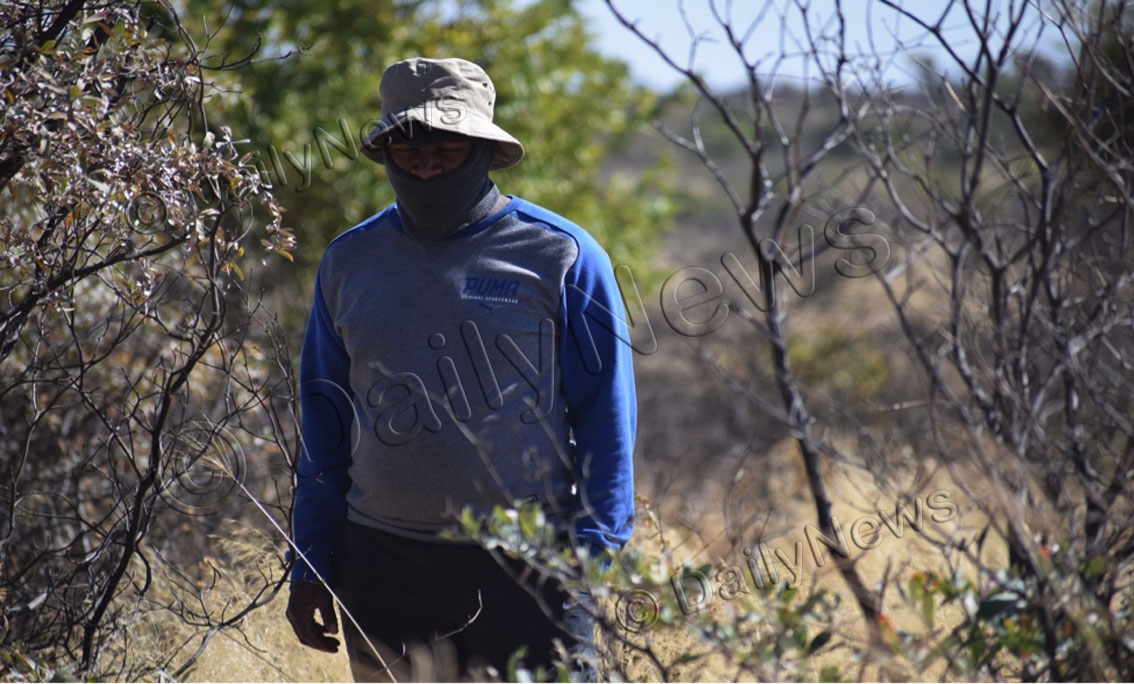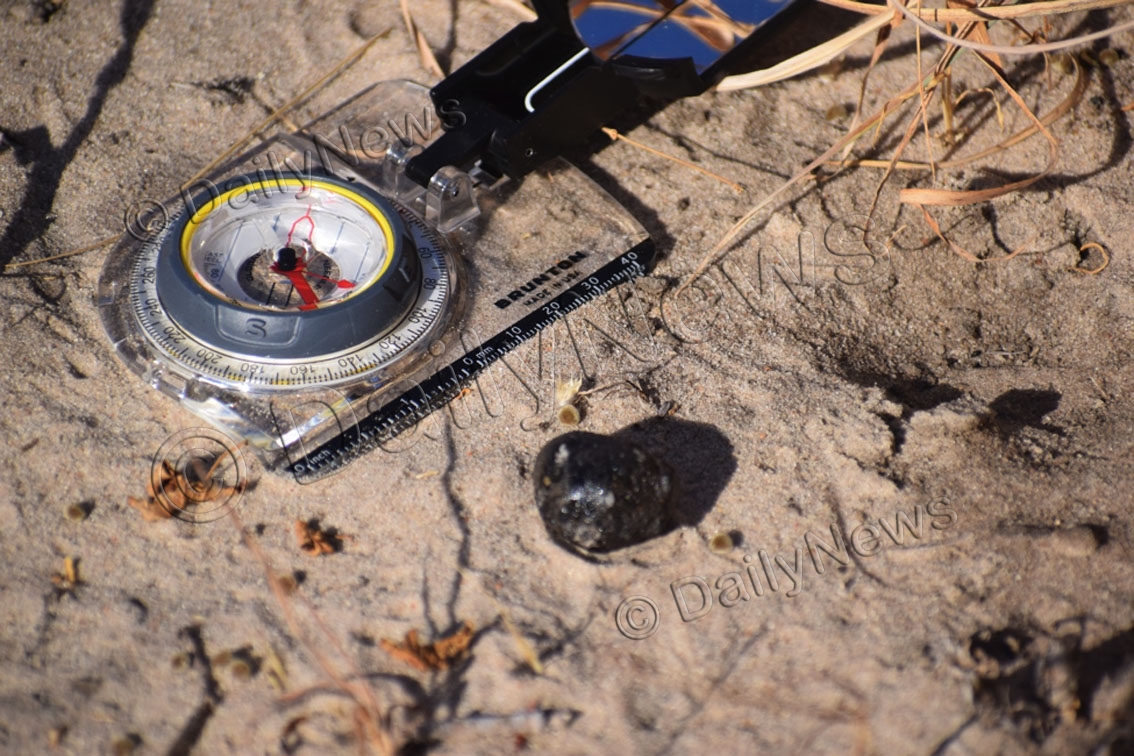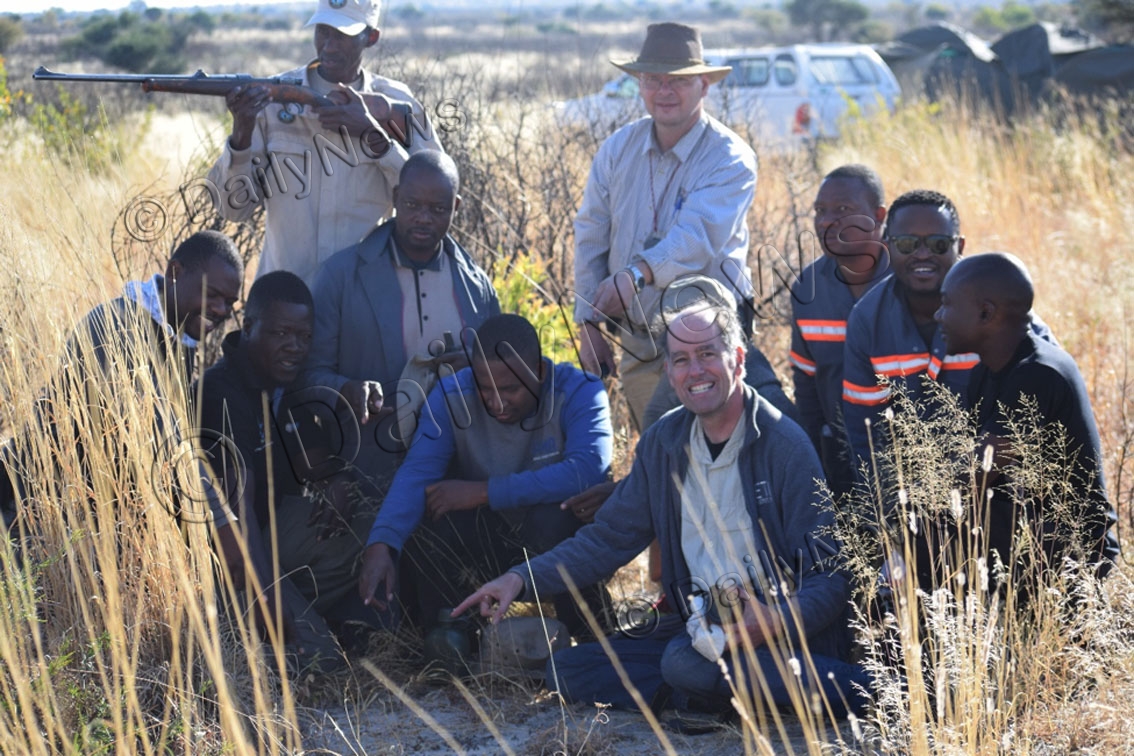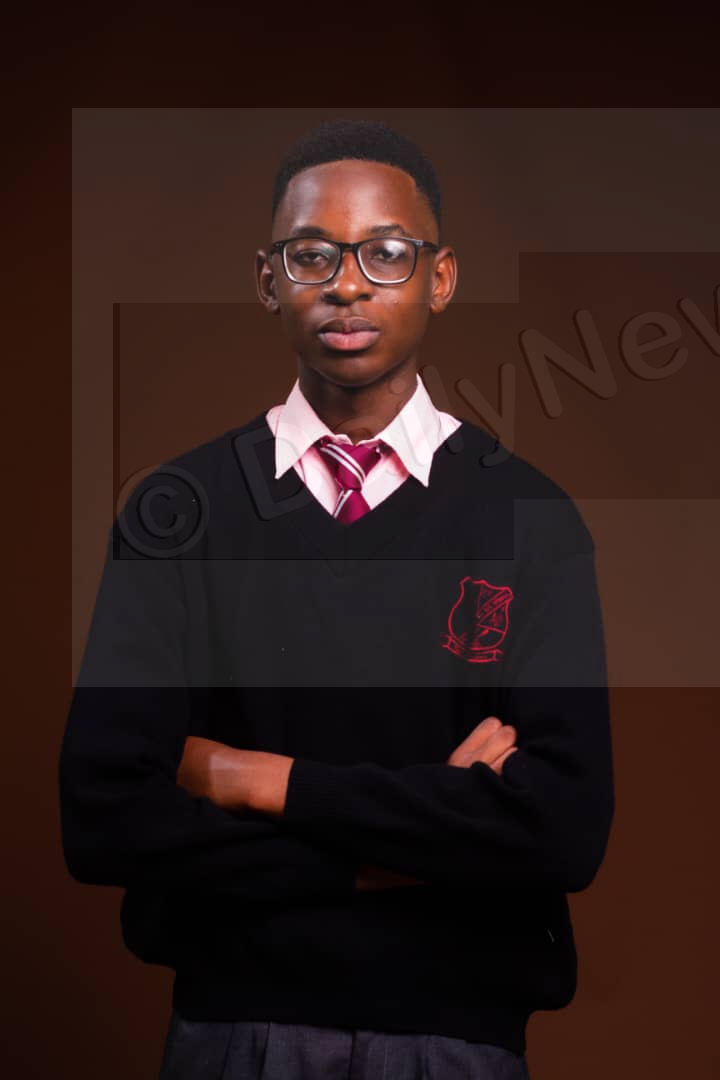Seitshiro savours moment
12 Jul 2018
Last month, a huge shooting star lit up the sky and fell on the ground triggering a fair amount of global interest and the curiosity of a young Motswana geologist to follow its trail. He shares his experience with BOPA’s Ndingililo Gaoswediwe in this riveting interview.
For someone who wanted to be a soldier, Lesedi Seitshiro never imagined that one day he would be savouring the moment of being one of a few, if not the first Motswana ever to spot a meteorite.
In layman’s terms, meteorites are rock particles that fall on the ground from space.
In fact, no one, including Seitshiro ever imagined that in their lifetime a meteorite would someday be discovered in Botswana.
It is something that most people only see in Science fiction movies.
However, to Seitshiro, it was neither a dream nor a movie. “Ke le bone guys! (I found it!)”
Nothing would have come as a moment of joy as Seitshiro screamed excitedly after spotting a small black stone, almost the size of a thumbnail, which looked like a piece of charcoal.
This was a culmination of six cold nights in the predator- infested semi-arid shrub savanna of the Central Kalahari Game Reserve (CKGR).
The hunt for a ‘fallen star’ started on June 17 after Seitshiro joined a group of geoscientists from Botswana International University of Science and Technology (BIUST), University of Botswana’s Okavango Research Institute (ORI), Botswana Geoscience Institute (BGI) and National Aeronautics and Space Administration (NASA) from the US.
The group set out for the CKGR after American scientists detected an earth-bound asteroid, eight hours before collision on June 2.
As the asteroid named Asteroid 2018 LA collided with earth, it produced a huge light, which was witnessed by a number of spectators in Botswana and neighbouring countries and captured on numerous surveillance and security cameras.
The asteroid collided with the earth, turning into a meteor fireball that detonated over Botswana a few seconds after entering the atmosphere, according to a BGI press statement released on July 6.
BGI says after disruption, the asteroid fragments were blown by the wind, scattering over a wide area.
A US-based group headed by Peter Jenniskens independently calculated the landing area.
After all this had been done, Oliver Moses from ORI teamed up with Jenniskens to locate the position and altitude of the fireball’s explosion from a video footage collected from Rakops and Maun.
It was the beginning of Seitshiro’s six nights in the wilderness.
“The first day of the expedition, I and a research fellow-student from BIUST got stuck along the sandy Tsau road on our way to the park and we had to spend the night in the vehicle,” says Seitshiro.
He continues, “…no phone reception to call other team members.”
The said team members included BIUST’s Professor Alexander Proyer, who was the joint expedition team leader, BGI senior curator Mohutsiwa Gabadirwe, who coordinated access to the fall area in the reserve and the rest of the team. Eventually they made it.
For the next five days, Seitshiro says they spent freezing nights in tents, with temperatures recording as low as a degree Celsius.
Given the infestation of dangerous wild animals such as elephants and carnivores such as lions, the team was accompanied by a wildlife ranger to protect them against turning into a snack for the predators.
As a precaution in the reserve, Seitshiro says the team was advised to avoid bright clothing that would otherwise attract unsuspecting predators.
The expedition was hardly a bed of roses nor a walk in the park for the team.
They had to endure tyre punctures, vehicles stuck in the sand, six nights without water over their bodies, not to mention that they had to play vegetarians the whole time because meat was not allowed in the park.
Day one… day two… day three… day four, they walked and the journey seemed endless.
Day five… the team was scattered all over the bush, walking 10 metres apart in solitary silence.
Seitshiro’s screams of “Ke le bone guys! (I found it guys!)” would cause a stir as everyone scrambled to bear witness of this rare find.
Initially, there was an air of doubt. Then there was awe.
Jenniskens would soon confirm that indeed Seitshiro had spotted the meteorite, a fragment of Asteroid LA 2018 that collided with earth on June 2.
This is the third time in history that an asteroid inbound to hit earth was detected early, ‘and only the second in our recent time recorded history that a specimen like this is recovered after such an incident, says Gabadirwe.
And what more of Seitshiro whose first name, Lesedi denotes light that it had to be him who was privileged to spot the ‘rare find’ that has attracted scientists from across the globe.
Even Lesedi himself cannot believe his luck and he is over the moon that his name will be indelibly carved in scientific journals, more so that he was just a volunteer.
Born 31 years ago in Matsiloje in the North East District, all what he desired were fatigues.
However, his dream thawed the moment he enrolled with University of Botswana for a Bachelor of Sciences.
He would later in 2011 graduate with a degree in Geology – the study of rocks and similar substances that make up the earth’s surface.
A master of his art, when it comes to rock analysis, Seitshiro is simply home.
“I rarely pass a rock without analysing it and for colleagues and students I am always the right man to consult.”
He boasts seven years work experience, five with Cowburn Isherwood Associates as a consulting geologist for Jwaneng and Karowe mines, and the rest with his current employer, BIUST, where he is a technician under the Department of Mining and Geological Engineering.
Will lady luck strike again and the meteorite be named after him? Only time will tell.
Meanwhile, Gabadirwe explains that the 17.92g specimen is a rare gift that will form part of the envisaged geological museum in Lobatse.
The rock, which he describes as priceless, would add value to the protected CKGR because the area where the meteorite was discovered would be marked a natural monument.
Undoubtedly, the ‘fallen star’ has put Botswana on the global scientific map and Gabadirwe concludes, “We may never recover a fragment from a meteor in our lifetime, maybe generations to come because most of material is consumed in the air.”
The search for more particles continues.
Nonetheless, beyond just excitement of recovering these materials, scientists believe that to be able to devise appropriate planetary defense measure against more devastating impacts such as one that injured 1 000 people in Russia in 2013, they need to know the material properties of the objects that are about to hit Planet Earth.
Such is possible only if they can connect the properties from remote observation with the explosion behaviour and the material fallen to the ground. ENDS
Source : BOPA
Author : Ndingililo Gaoswediwe
Location : Gaborone
Event : Interview
Date : 12 Jul 2018








